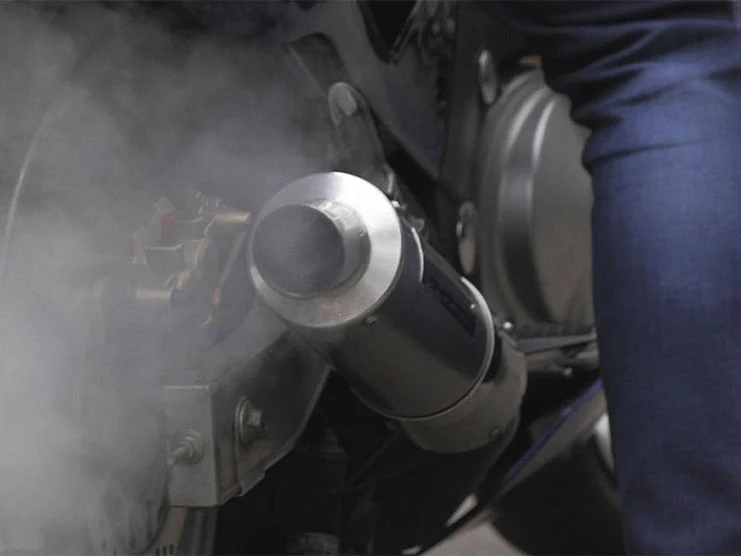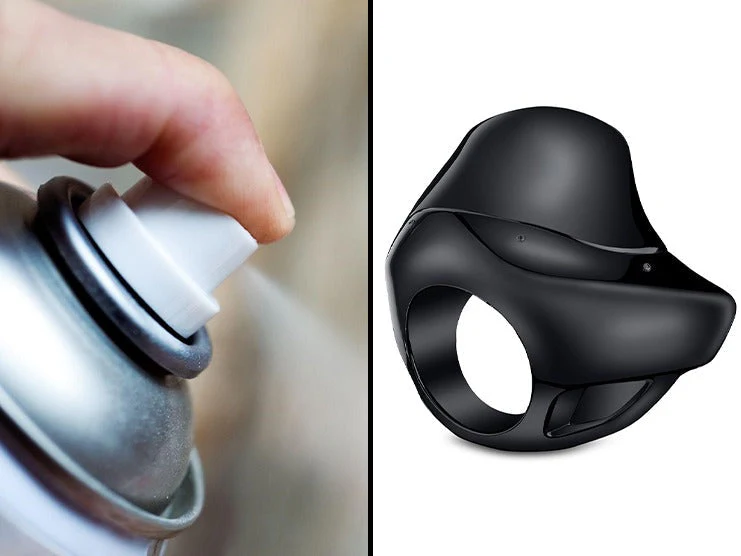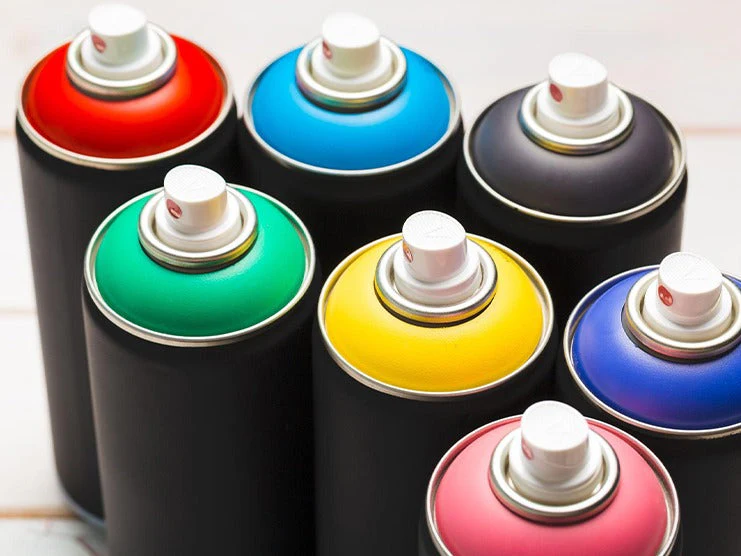Table of Content
Motorcycle exhaust heat is a common issue almost every rider faces, especially during long rides or traveling in hot weather. Exhaust heat can affect comfort and result in serious exhaust and engine damage. In this article, you will learn the best ways to manage motorcycle exhaust heat, fix any potential issues, and stay safe on the road.
1. Understanding the Basics of a Motorcycle Exhaust System
1.1 Exhaust System
The exhaust is responsible for releasing all the high-temperature, noxious gases produced by the engine. It also helps improve engine performance, reduce engine noise, and reduce pollution.
1.2 Types of Motorcycle Exhaust Systems
Here is the available list of motorcycle exhaust systems in the market:
- Stock Exhaust
- Slip-On Exhaust
- High-Mount Exhaust
- Underbelly Exhaust
- Full Exhaust System
1.3 Motorcycle Exhaust System Major Materials
Here is the checklist of materials that can be used to manufacture motorcycle exhaust systems:
Steel
Steel is an alloy of carbon and iron that is in use to manufacture motorcycle exhaust systems. It is one of the most favored materials due to its properties. Moreover, it is relatively less costly compared to other material types.
Aluminium
Aluminum is a lightweight element compared to other materials. It can efficiently disperse heat. Aluminum is a bit less enduring compared to steel and titanium but it is chosen by the manufacturers who want to lower the weight of their motorcycles.
Stainless Steel
Stainless steel is an alloy of iron. It is recognized among manufacturers due to its characteristics like resistance to erosion or rusting. Manufacturers who aim to entice riders who live around the seaside or in increased-humidity areas use this material in the exhaust system.
Carbon Fiber
Carbon fiber is a lightweight and aesthetically attractive material that gives your motorcycle a dynamic look. Though it is heat-invulnerable and rustproof, carbon fiber is less enduring than titanium and stainless steel.
Titanium
Titanium is a strong, long-lasting, and lightweight material sufficiently suited for high-performance motorcycles. However, it is more costly than other materials and is not generally used for standard motorcycles.
1.4 The Basic Working of an Exhaust System
It is crucial to apprehend the operating technique of motorcycle exhaust systems before initiating to manage the heat. The motorcycle exhaust system is the central part that is accountable for discharging toxic gasses from the engine and moving them out of the motorcycle. This method of exhaustion causes a lot of heat, which can be truly discomfiting for the riders and can induce many severe safety risks.
2. Potential Risks of Excessive Exhaust Heat
Excessive heat coming out of the motorcycle exhaust can pose various risks to the rider and motorcycle, including:
- Burning the Rider's Legs
- Damage to the Exhaust System
- Damage to the Engine
- Decreased Performance
- Create a Fire
- High Chance of Explosion
- Damage to Internal Motorcycle Parts
3. Pro Tips for Managing Motorcycle Exhaust Heat
Listed below are tips on how to manage motorcycle exhaust heat:
3.1 Consider High-Quality Material
While selecting your motorcycle's exhaust system, consider all the factors, such as design, material, heat resistance, shielding, etc. High-quality materials for an exhaust that offers high heat protection are stainless steel and titanium.
3.2 Install Heat Warps
Installing heat wraps can help reduce the temperature of the motorcycle exhaust system. Heat wraps are an effective and inexpensive way to reduce the amount of heat released. Heat wraps retain the heat within the exhaust emissions, allowing gases to flow out more easily.
How to Install?
Follow these steps to install heat warps on your motorcycle’s exhaust system:
Clean the Exhaust Pipe
Ensure that the exhaust is pure of any debris or grease. Use a wipe or degreaser to completely clean the exterior.
Measure the Length of the Pipe
Calculate the length of the exhaust pipe you want to cover. Ensure to look for any bends or curves and add the wrap length accordingly.
Cut the Heat Warps
Cut the heat wrap according to the needed length using a blade, cutter, or scissors. Try to leave some additional wrapping to ensure a snug fit.
Wrap the Pipes
Start from one end of the exhaust pipe and continue to wrap the wrapping around while overlapping each layer about half an inch. Make sure the wrapping is snug but not too tight. Continue wrapping until it reaches the other end of the exhaust pipe.
Secure the Ends
Try using stainless steel wires or metal zip ties to secure and bind the ends of the wrapping.
Also Read: How to Heat Wrap a Motorcycle Exhaust
3.3 Optimize Air/Fuel Mixture
A low-quality fuel/air mixture can decrease and harm your engine’s performance. It can cause the engine to run hotter than usual, which increases the amount of heat generated by the exhaust system. Make sure your motorcycle is properly tuned and the air/fuel mixture is balanced for optimal handling and heat reduction.
How to Optimize?
Follow the following guide to optimize to fuel mixture:
- Inspect the Air Filter Regularly to Confirm it is Clean
- Inspect the Oxygen Sensor to Notice it is on the Positive Count
- Adjust the Fuel Mixture to Assure it has a Proportion of 12.5:1 - 13.5:1
- Utilize a Fuel Additive to Elevate the Working of the Fuel System and Combustion
3.4 High-Grade Engine Oil
The use of high-grade engine oil can assist to decrease heat and friction within the engine, supporting reduce the amount of heat caused by the exhaust system. Make sure to check the manufacturer's guidelines when looking for the right engine oil.
How to Maintain?
When using high-quality engine oil, make sure to keep the following tips in mind:
- Choose the Right Type of Oil Based on Your Model
- Choose High-Quality Oil
- Change Out the Oil Regularly Every 3,500 to 7,500 miles or six to seven months
- Check the Oil Level Before Riding
3.5 Avoid Iding for Long Periods
Leaving your motorcycle idle for long periods can cause the exhaust system to gradually malfunction. Over time, it starts to overheat. Try to turn off the engine when you are not riding your motorcycle.
How to Do?
- Before riding, warm up the engine by letting it idle for about 30 to 60 seconds
- Plan your route. Try to avoid routes with heavy traffic
- Turn off the engine whether by turning off the ignition or pressing a button
Note: If your motorcycle doesn't have any automatic features that turn off the engine, you can install an aftermarket part.
3.6 Install a Heat Shield
Heat shields help reflect heat away from the rider and the motorcycle parts. You can install heat shields at various points on the exhaust system, including
- Muffler
- Header Pipes
- Catalytic Converter
How to Install?
- Choose the Right Heat Shield Based on Size, Shape, and Material
- Remove the Exhaust System if Required
- Install the Heat Shield According to the Manufacturer's Instructions
- Reinstall the Exhaust System
3.7 Ceramic Coating
Ceramic coating can be applied to the exhaust pipes to reduce the heat emitted by the exhaust system. It is often applied by using an aerosol spray can or a paintbrush. The ceramic coating can also help protect the exhaust system from being damaged, mainly from corrosion.
How to Do?
- Choose the Right, High-Quality Ceramic Coating
- Clean the Exhaust System
- Apply the Ceramic Coating
- Let the Coating Cure
3.8 Avoid Overloading
Carrying too much weight on your motorcycle can increase the amount of heat generated by the engine and cause the exhaust pipe to overheat. Always try to carry cargo under the manufacturer's recommended weight limit.
How to Do?
- Know Your Motorcycle's Weight Limit
- Check the Weight of Your Cargo
- Check Your Passengers’ Weight
- Avoid Riding at High Speed
3.9 Thermal Barrier Coating
A thermal barrier coating is one of the best types of ceramic coating applied via a plasma spray. This process will ensure the coating sticks to the surface of the exhaust system. In addition, these barriers can offer small performance benefits due to conducting low heat. These coatings mainly protect steel or stainless steel exhaust systems from rust.
How to Apply?
- Choose High-Quality Thermal Barrier Coating
- Clean the Exhaust System Thoroughly
- Apply the Thermal Barrier Coating
- Let the Coating Cure
3.10 Pay Attention to Your Motorcycle's Temperature
Monitoring your motorcycle's temperature meter can help you detect and fix any issues with the exhaust or engine. If you have noticed any sudden temperature change, stop immediately to inspect and repair the exhaust system if necessary.
How to Maintain?
- Check Your Temperature Gauge
- Use a Motorcycle Engine Temperature Monitor
- Listen for Unusual Noises
- Stop and Check the Exhaust System
4. Guide to Help You Choose a Motorcycle Exhaust System
Many motorcyclists value changing their motorcycles with aftermarket motorcycle parts, Including installing an aftermarket exhaust system.
If inaugurating an aftermarket exhaust system, ensure it is developed to enhance working and lessen the heat. Make sure that the exhaust is appropriate and suitable for your model. Also, make sure to look for the guide mentioned: “How much noise the exhaust reduces”. If you can, choose an exhaust system from a reputable brand with good feedback and have it installed by an experienced mechanic.
5. Proper Cleaning and Maintenance Techniques
If you ride your motorcycle daily, then there are more chances for the exhaust system to be affected by high heat emissions. When performing maintenance on the exhaust system, make sure to do the following:
- Regularly Inspect for Leaks or Damage
- Clean with High-Quality Softener or Cloth
- Lubricate the Exhaust System
- Replace Worn or Damaged Parts
When you clean the engine and exhaust pipes from debris buildup, the heat and gasses released during combustion will come out more efficiently. Cleaning and maintenance prolong the lifespan of the exhaust system.
Note: Make sure to follow the manufacturer's guidelines and use high-grade tools or products to clean the exhaust system.
6. Ways to Protect Yourself from Excessive Exhaust Heat
While riding a motorcycle, combustion in the engine can cause the exhaust system to emit high temperatures. To keep yourself from accidentally burning yourself, use the following tips:
- Wear Protective Gear, Including Insulated Pants, Heat Shields, etc.
- Stay Hydrated to Cool Down Your Body Temperature
- Try to Take Breaks to Relax Your Body and Relieve Stress
7. Best Practices for Riding in Hot Weather
If you are planning to ride a motorcycle in high temperatures for a long time, then follow these practices:
- Avoid Routes with Heavy Traffic
- Try to Ride During the Cooler Times of the Day
- Try Lane Splitting if Legal
- Look Out for Other Drivers
- Watch for Road Hazards
- Wear Light-Colored Riding Gear
8. Common Myths About Exhaust Heat Debunked
There are many myths about motorcycle exhaust systems that mislead riders and can encourage dangerous practices. Examples of myths about exhaust systems include the following:
| Myth | Reality |
|---|---|
| It is better to remove the heat shield to increase airflow. | Removing the heat shield can result in burns and damage to the motorcycle. |
| Water can cool down the motorcycle exhaust system | Pouring cold water on a hot exhaust system can cause it to warp or crack. |
| Riding faster will reduce heat from the exhaust. | When you ride faster, your motorcycle burns more fuel, increasing the amount of gases and the temperature in the exhaust system. |
9. Safety Precautions for Riding in Traffic
While riding in traffic, every rider needs to follow safety precautions to avoid releasing high-heat emissions from the exhaust system that could affect themselves and their surroundings. Listed below are safety tips for riding in traffic:
- Keep a Safe Distance from Other Vehicles
- Use Appropriate Turns or Hand Signals
- Keep an Eye Out for Road Hazards
- Avoid Unexpectedly Switching Lanes
10. Enjoying Your Motorcycle Ride while Staying Safe
Managing your motorcycle exhaust heat can be challenging on the road, but with the help of the proper tips and techniques, it is possible to stay safe, easy, and comfortable on the road.
By understanding the basics of the exhaust system and implementing the precautionary pressures, you can easily enjoy your ride while staying safe and comfortable on the road.
11. Conclusion
Maintaining the motorcycle exhaust will help reduce heat to ensure the rider's comfort and extend the motorcycle's lifespan. Overheating of the motorcycle exhaust system can direct to severe issues like harmful and difficult handling, very high-cost repairs, and other engine-related issues. Also, it can reduce the lifespan of the exhaust system.
Always remember to prioritize your safety and if you notice any signs of the exhaust overheating, try to consult an experienced mechanic. If you are facing motorcycle luggage storage problems then you can get saddlebags, tank bags, and sissy bar bags from Viking bags.













Leave a comment
All comments are moderated before being published.
This site is protected by hCaptcha and the hCaptcha Privacy Policy and Terms of Service apply.